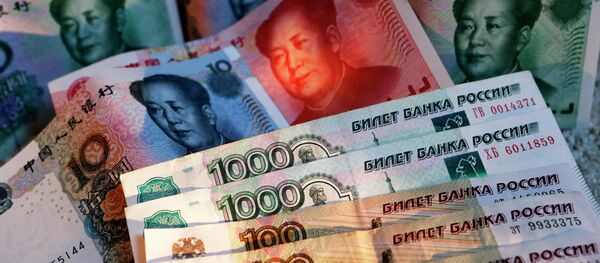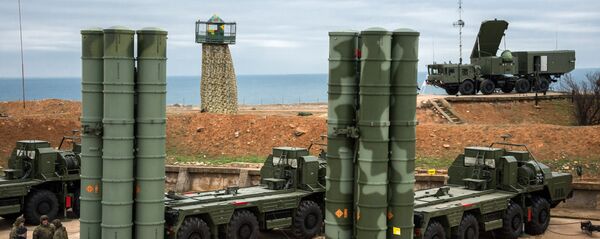On Wednesday, Russian state development bank Vnesheconombank chief Igor Shuvalov confirmed that Russia and China were working on another agreement for trade settlements in each others' national currencies, with the news following on the heels of last week's announcement that India would be paying Russia for its S-400 air defence system in roubles.
Sputnik has already written about why the rouble-denominated S-400 deal was at least partially a geopolitical decision, allowing New Delhi to demonstrate that it's not a US "vassal", and ensuring that both countries can avoid the headache of possible US sanctions, like the ones Washington slapped on China earlier this year over its purchase of Russian armaments.
Nothing Personal, Just Business
However, there's another practical reason for the recent moves by the three developing economies to turn away from the greenback: the exchange rate.
In September, a CNBC study found that among 143 national currencies, over 80 percent had suffered a decline in value against the dollar since January, with Venezuela, Argentina and Turkey hit the hardest (falling 99 percent, 53 percent and 38 percent against the dollar, respectively), and Brazil, Russia, India and China hit as well, seeing drops of 20 percent, 15 percent, 11 percent and 5 percent, respectively.
In this situation, and given President Trump's ongoing trade war against economic adversaries and allies alike, it makes sense that major economies are looking for alternatives to dollar-denominated trade deals, which were previously considered to be a mark of stability and convenience.
Taking the Russian-Indian S-400 deal as an example of why non-dollar trade makes sense, Russian economics observer and Sputnik contributor Alexander Lesnykh began by calculating that the $5 billion transaction is equivalent to about 331 billion roubles according to the Russian Central Bank's exchange rate.
As of January 1, 2018, the rouble was worth 0.89 Indian rupees, and 0.88 rupees ten months later in late October 2018. Through the year, the currency fluctuated between 0.98-0.85 rupees, amounting to a volatility corridor of 0.13 roubles.
"For comparison, on January 1, the dollar was worth 57.04 roubles, and 65.6 roubles on November 1. The maximum price reached this year was 69.9 roubles, the minimum 55.6 roubles. That's a volatility corridor of 14.3 roubles," Lesnykh wrote. In other words, the analyst noted, "the difference in terms of this indicator between the rouble/dollar and rouble/rupee pairings is an astronomical 11,000 percent."
Moscow has signalled that it would be only too glad to increase non-armament trade in national currencies with New Delhi, with the civilian sector accounting for nearly 80 percent of the $9.1 billion in trade turnover between Russia and India in 2017.
"Today, the share of trade in roubles in exports is 20 percent, and about 21 percent for imports", Deputy Prime Minister Yuri Borisov said at a press briefing in September. "This is a good indicator, but we will nevertheless be increasing payments in national currencies as a means of solving the problem of non-payment. This also applies to contracts in military-technical cooperation", Borisov added, alluding to an incident back in April when Indian banks froze over $2 billion in Russian-Indian defence-related deals out of fears of US sanctions.
Ultimately, as China, India and Russia, the world's three largest developing economies, begin to enjoy economic dividends of the decision to move away from the dollar, it would only make sense for other developing economies facing the Fed's destabilising policy to start doing the same.




